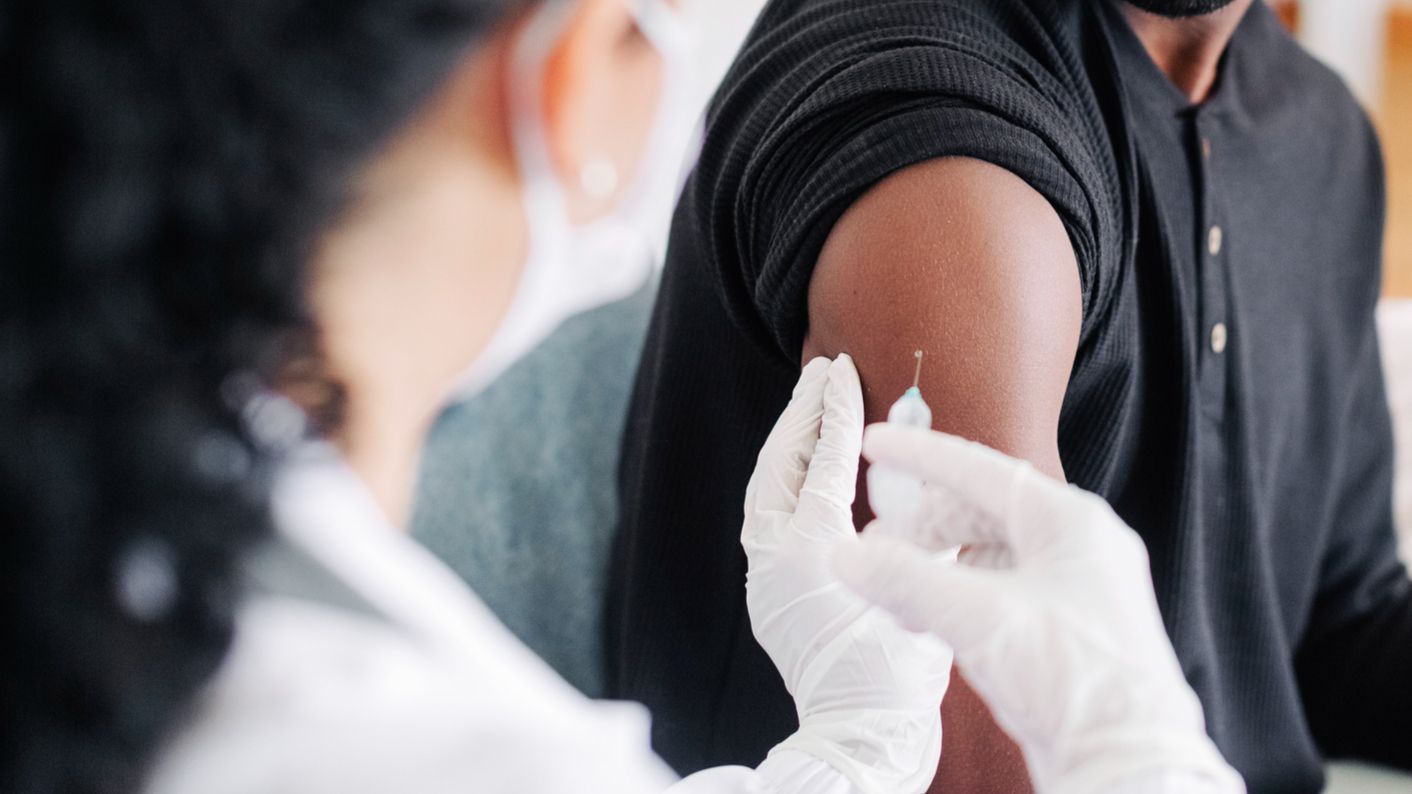Gonorrhoea vaccine roll-out begins across the UK – BBC

Report on the United Kingdom’s Gonorrhoea Vaccination Programme
Introduction: A Public Health Initiative Aligned with Global Goals
The National Health Service (NHS) in the United Kingdom has commenced a nationwide rollout of a gonorrhoea vaccine, available through sexual health clinics. This world-first programme represents a significant public health intervention aimed at controlling record-level infection rates. The initiative is directly aligned with the United Nations Sustainable Development Goals (SDGs), particularly SDG 3: Good Health and Well-being, by seeking to end the epidemic of a major communicable disease.
Strategic Contribution to Sustainable Development Goals (SDGs)
SDG 3: Good Health and Well-being
The vaccination programme is a direct response to several targets within SDG 3:
- Target 3.3: End Communicable Diseases: The primary objective is to curb the gonorrhoea epidemic, with over 85,000 cases recorded in 2023, the highest in nearly a century.
- Addressing Antimicrobial Resistance (AMR): By reducing overall infection rates, the vaccine is expected to slow the development and spread of antibiotic-resistant strains of gonorrhoea, a growing global health threat.
- Target 3.7: Universal Access to Sexual and Reproductive Health-Care Services: The programme enhances the toolkit for sexual health, providing a new preventative measure alongside existing methods like condom use and regular testing.
- Target 3.4: Reduce Premature Mortality and Promote Mental Health: The vaccine can prevent severe complications such as reactive arthritis and infertility, and alleviate the mental health burden associated with fear of infection and managing the disease.
SDG 10: Reduced Inequalities
The programme’s implementation strategy demonstrates a commitment to reducing health disparities:
- Target 10.2 & 10.3: Empower and Promote Social and Economic Inclusion: The initial rollout targets those at highest risk, including gay and bisexual men with a history of multiple sexual partners or STIs. This focused approach ensures that resources are directed to the most vulnerable populations, promoting health equity.
SDG 17: Partnerships for the Goals
The success of this initiative relies on multi-stakeholder collaboration, reflecting the principles of SDG 17:
- The programme is a result of cooperation between public bodies like NHS England and civil society organisations, such as the Terrence Higgins Trust, which campaigned for the vaccine’s introduction.
Programme Details and Projected Impact
Vaccine and Rollout Strategy
The vaccination plan is structured for maximum public health benefit:
- Vaccine Utilised: The 4CMenB vaccine, originally developed for meningitis B, is being repurposed due to its observed 30-40% effectiveness against the genetically similar gonorrhoea bacterium.
- Initial Target Cohort: The jabs will first be offered to individuals identified as being at the highest risk of contracting the infection.
- Accessibility: The vaccine is being made available at no cost through NHS sexual health clinics across the UK.
Economic and Public Health Projections
The anticipated outcomes of the programme are substantial:
- Prevention of an estimated 100,000 new gonorrhoea cases.
- Projected savings for the NHS of nearly £8 million over the next decade.
- A significant reduction in the transmission of both standard and antibiotic-resistant gonorrhoea.
Stakeholder Perspectives and Recommendations
Endorsements from Health Organisations
- Terrence Higgins Trust: The sexual health charity described the vaccine’s introduction as a “huge win” and a “remarkable addition to our toolkit on sexual health.”
- NHS England: Dr Amanda Doyle, National Director for Primary Care and Community Services, stated the programme is a “real step forward for sexual health” and urged all eligible individuals to take up the offer to “keep each other safe.”
Individual Testimonies and Lived Experience
- Case studies reveal the vaccine’s value in mitigating severe symptoms. One individual reported that after vaccination, a subsequent infection was “much more manageable,” allowing him to continue daily activities. This highlights the vaccine’s role as an additional tool within a comprehensive safer sex strategy that includes PrEP and regular testing.
- Another testimony detailed the severe, long-term health consequences of a gonorrhoea infection, including reactive arthritis and lasting mental health impacts. This individual expressed hope that the vaccine would not only protect himself but also his partners and help relieve the burden on sexual health services.
Conclusion and Call to Action
The UK’s gonorrhoea vaccination programme is a forward-thinking public health measure that directly supports the achievement of key Sustainable Development Goals. By targeting a pressing communicable disease, addressing antimicrobial resistance, and promoting health equity, it serves as a model for proactive healthcare. Eligible individuals are encouraged to contact their local sexual health clinic for further information on accessing the vaccine.
Analysis of Sustainable Development Goals in the Article
1. Which SDGs are addressed or connected to the issues highlighted in the article?
The article on the rollout of the gonorrhoea vaccine in the UK addresses several Sustainable Development Goals (SDGs) by focusing on public health, well-being, equality, and the strength of health institutions.
- SDG 3: Good Health and Well-being: This is the primary SDG addressed, as the article’s core subject is a public health intervention to combat a communicable disease, improve sexual health, and address the mental well-being of affected individuals.
- SDG 5: Gender Equality: This goal is relevant through its focus on sexual and reproductive health. The provision of comprehensive sexual health services, including new vaccines, is a key component of this SDG.
- SDG 10: Reduced Inequalities: The article connects to this SDG by highlighting a targeted health intervention for a specific high-risk population, aiming to reduce disparities in health outcomes and ensure vulnerable groups have access to necessary care.
2. What specific targets under those SDGs can be identified based on the article’s content?
-
Target 3.3: End epidemics of communicable diseases.
The article directly addresses this target by describing a major initiative to “tackle record-breaking levels of infections” of gonorrhoea, a communicable disease. The rollout of the vaccine is a clear strategy to combat and reduce the incidence of this disease, with the article noting there were “more than 85,000 cases of gonorrhoea in 2023 – the highest since records began.”
-
Target 3.4: Promote mental health and well-being.
The article highlights the psychological burden of STIs. One individual, Matthew, describes how his experience with gonorrhoea “has impacted his mental health,” causing him to be “constantly fretting about HIV.” The vaccine is presented as a tool to alleviate this fear and anxiety, thereby promoting mental well-being.
-
Target 3.8: Achieve universal health coverage, including access to quality essential medicines and vaccines.
The initiative is led by NHS England, a universal health coverage system, making the vaccine “widely available… in sexual health clinics across the UK” for free to those eligible. This contrasts with the experience of Joey, who had to pay “£220” at a private pharmacy, underscoring the importance of the NHS providing universal access to this essential vaccine.
-
Target 3.d: Strengthen capacity for early warning, risk reduction, and management of national health risks.
The article discusses the growing concern over “antibiotic-resistant cases” of gonorrhoea, which represents a significant national health risk. The vaccine rollout is a proactive measure to manage this risk by reducing overall infections and, consequently, the spread of resistant strains.
-
Target 5.6: Ensure universal access to sexual and reproductive health.
The program is a clear expansion of sexual health services. The article quotes Richard Angell of the Terrence Higgins Trust, who calls the vaccine a “remarkable addition to our toolkit on sexual health.” By introducing a new preventive tool for an STI, the UK is enhancing access to comprehensive sexual health care.
-
Target 10.3: Ensure equal opportunity and reduce inequalities of outcome.
The policy to first offer the vaccine to “those at highest risk – mostly gay and bisexual men who have a history of multiple sexual partners” is a targeted action to reduce inequalities in health outcomes. By focusing resources on the population most affected, the program aims to close the health gap related to this specific disease.
3. Are there any indicators mentioned or implied in the article that can be used to measure progress towards the identified targets?
The article contains several explicit and implicit indicators that can be used to track progress.
- Incidence of gonorrhoea: The article provides a clear baseline metric: “more than 85,000 cases of gonorrhoea in 2023.” A reduction in the annual number of new cases would be a primary indicator of success for Target 3.3. The prediction that the vaccine could “prevent as many as 100,000 cases” over time also serves as a measurable goal.
- Prevalence of antibiotic-resistant gonorrhoea: The article mentions the goal of slowing the “growing number of antibiotic-resistant cases.” An indicator would be the proportion of gonorrhoea infections that are resistant to standard antibiotics. A decrease in this proportion would signify progress under Target 3.d.
- Vaccination coverage rate: For Target 3.8, a key indicator is the number or percentage of eligible individuals who receive the vaccine. The call for “everyone eligible takes up the offer” implies that tracking uptake within the target demographic (“gay and bisexual men”) is crucial.
- Economic impact on the health system: The article states the program could “potentially saving the NHS almost £8m over the next decade.” This projected cost-saving is a quantifiable indicator of the program’s efficiency and its contribution to the sustainability of the universal health system (Target 3.8).
- Self-reported mental well-being: While not a quantitative metric in the article, the personal stories about the mental health impact (“fearful,” “constantly fretting”) suggest that qualitative or survey-based indicators could be used to measure improvements in mental well-being (Target 3.4) among those vaccinated.
SDGs, Targets, and Indicators Summary
| SDGs | Targets | Indicators Identified in the Article |
|---|---|---|
| SDG 3: Good Health and Well-being | 3.3: End epidemics of communicable diseases. | – Annual number of new gonorrhoea cases (Baseline: 85,000 in 2023). – Projected prevention of 100,000 cases. |
| 3.4: Promote mental health and well-being. | – Qualitative reports of reduced fear and anxiety about STIs post-vaccination. | |
| 3.8: Achieve universal health coverage and access to vaccines. | – Vaccination uptake/coverage rate among eligible high-risk groups. – Financial savings for the NHS (Projected: £8m over a decade). |
|
| 3.d: Strengthen capacity for management of national health risks. | – Rate of antibiotic-resistant cases of gonorrhoea. | |
| SDG 5: Gender Equality | 5.6: Ensure universal access to sexual and reproductive health. | – Availability of a new vaccine as part of the national “toolkit on sexual health.” |
| SDG 10: Reduced Inequalities | 10.3: Ensure equal opportunity and reduce inequalities of outcome. | – Provision of targeted vaccination for high-risk populations (gay and bisexual men). |
Source: bbc.com

What is Your Reaction?
 Like
0
Like
0
 Dislike
0
Dislike
0
 Love
0
Love
0
 Funny
0
Funny
0
 Angry
0
Angry
0
 Sad
0
Sad
0
 Wow
0
Wow
0



























;Resize=805#)


















































